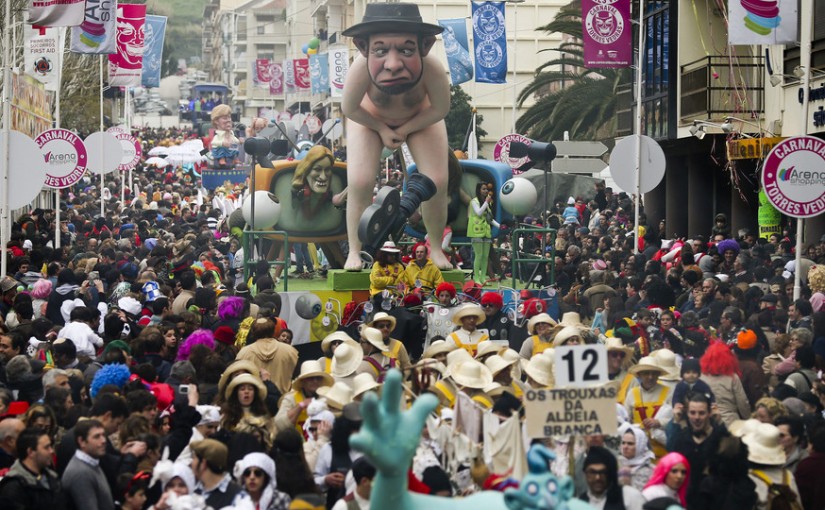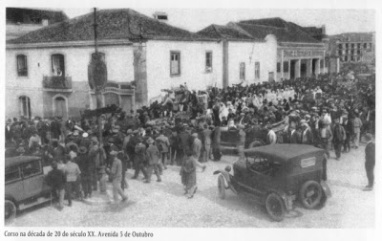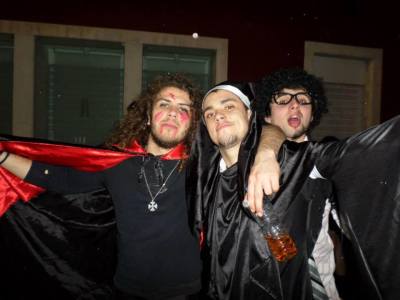Hello everyone. As a big fan of Carnival, and living in a city with a great tradition on that, I’ll talk about the Carnival of my town – Torres Vedras, Portugal.
This year, Carnival begins on February 13, and it’s going to be 6 days of craziness, many drinks and masked people.
So, I’ll talk about how Carnival was born here and the changes through the years.
Carnival is one of the few festivals that remain loyal to traditions of Shrovetide in Portugal. The most important thing that keeps this festival alive is the massive participation of population of all country, being the most famous Carnival in Portugal.
The celebration
There’s every year a monument that satirizes a feature of society.
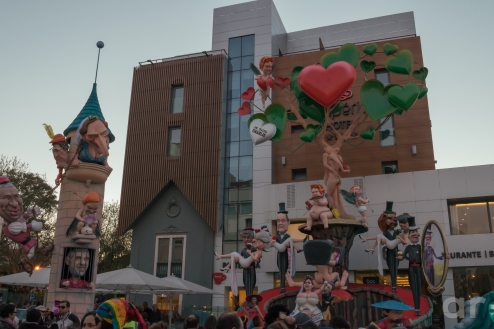
In the first days morning, happens a parade with groups of all schools around Torres Vedras, since primary school to high school. In the end, there’s a reward for the best mask.
For the rest of the days, there are two parades per day, one during the afternoon, and another at night. On these parades, there are allegoric floats (characterized for the flack they do to the biggest events of the year), Matrafonas (men wearing women’s clothes and makeup, a tradition of Carnaval de Torres), and Cabeçudos (giant puppets controlled by men) accompanied by Zés-Pereiras (many revelers playing Bass Drums).
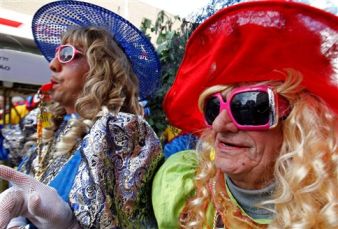

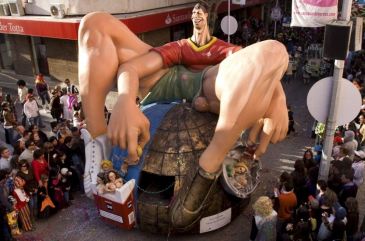
On Monday night, there’s the Corso Trapalhão (something like Bumbling Parade, where masked people walk around the streets on a parade).
Shrovetide happens on Wednesday, the last day of Carnival. Begins with the arrest of the Carnival King and he’s transported to the tribunal entry, where he’s judge with a speech. It’s a staging that normally joint 3000 people. To close the Carnival, there’s a firework.

History
The first reference to Carnaval de Torres (Torres Vedras Carnival) was in the time of D. Sebastião, by a 1574 document. The document was a complain of a Torres Vedras village dweller against some masked boys with spades, sticks and another objects.
New references to Carnaval de Torres appeared in 1885, with the first edition of the local newspaper. By that time, Carnival was limited to recitations and dances in collectivities and particular houses.
In the beginning of 20th Century, some appointments of political satire appeared, a characteristic that stayed until today, and also the animation on the streets has become more usual.
In the 20’s was created a commission to organize more seriously the street celebrations. That commission is known today as Confraria do Carnaval de Torres Vedras (Brotherhood of Carnival).
Carnaval de Torres on 20’s
The Carnival Kings emerged around 1925, and it’s believed that Matrafonas appeared in 1926. This two aspects marked forever the history of Carnaval de Torres.
In 1931 happened the first parade with allegoric floats, with more than 3000 people participating.


Since 1960, Carnaval de Torres assumed increasingly as a popular Carnival, marking the difference with another Carnival celebrations of the period. A proof for that was in 1971, when occurred the first famous Corso Trapalhão.
Since 1980, Carnaval de Torres grows year after year, rejecting external costumes and remaining until today as the “Carnaval mais português de Portugal” (The most portuguese Carnival of Portugal).
Now I’ll give you an excerpt of the speech of 1940, written by Jaime Umbelino, curiously my girlfriend’s uncle. It’s translated from portuguese to english, so maybe doesn’t sound as good as in portuguese, whereas the portuguese is an awesome and beautiful language to poems.
“There was beautiful Inês sitting quiet
(where no one knows nor it matters)
on the verge of Sizandro or Mondego
-where the plays theatre was-
When Adamastor, raged and blind,
Got up, sitting on the trestle,
and, calmly, he said in between the rocks:
There’s only one Carnival: -in Torres Vedras!”
Note: some words that you must not know, you can read the meaning here:
- Sizandro and Mondego: portuguese rivers;
- Adamastor: is a Greek-type mythological character famed by the Portuguese poet Luís de Camões in his epic poem Os Lusíadas (first printed in 1572), as a symbol of the forces of nature Portuguese navigators had to overcome during their discoveries;
I have many photos enjoying the Carnival, here is some of them.
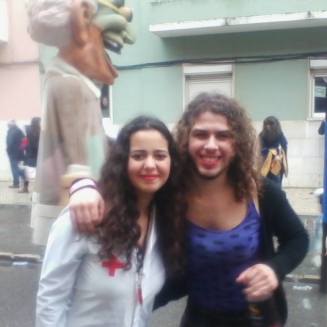
Location
Webpage of Carnaval de Torres: http://www.carnavaldetorres.com/
Any comments/thoughts/suggestions? I appreciate it 🙂
